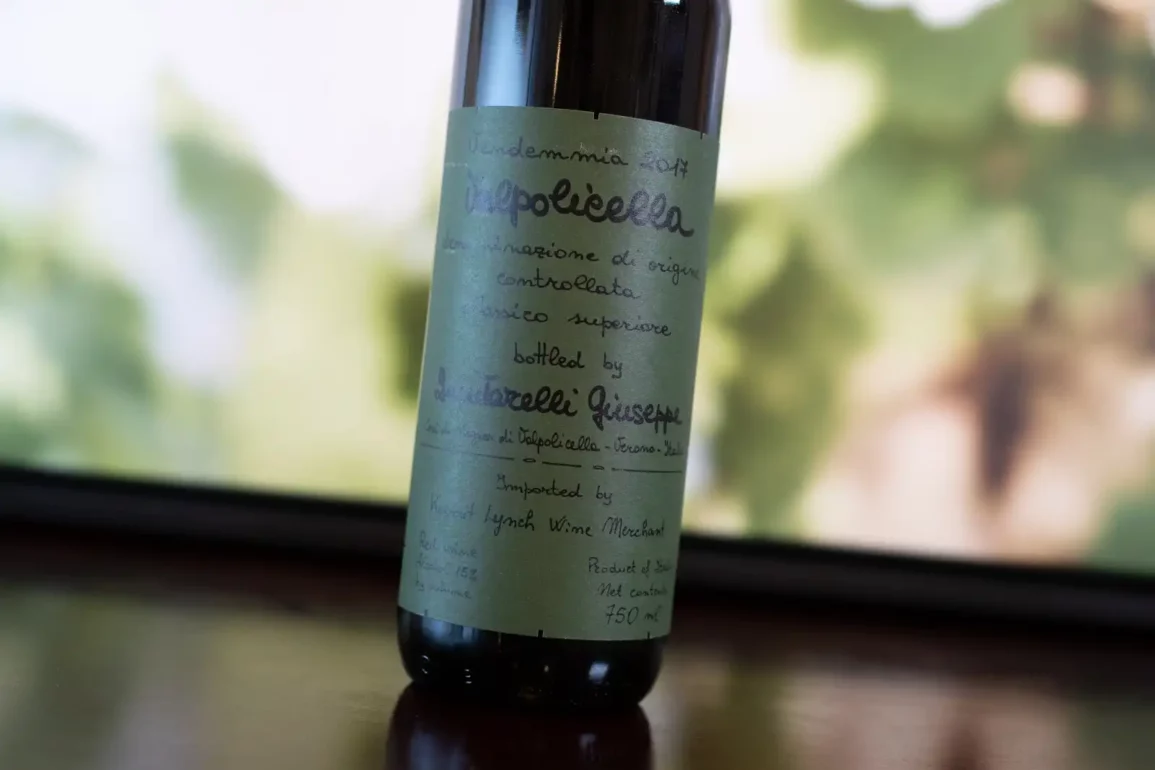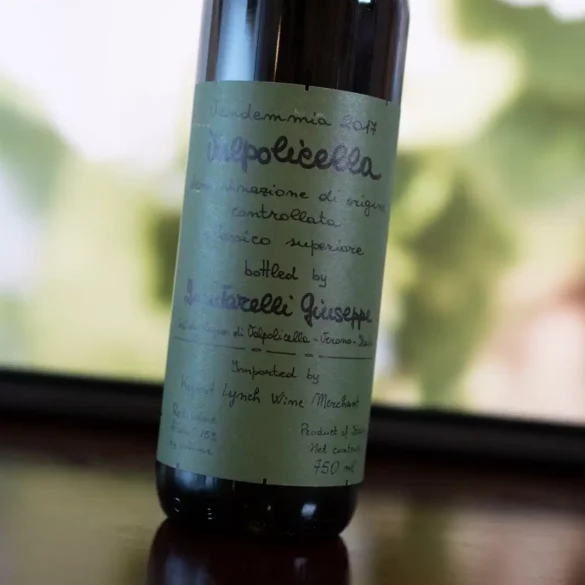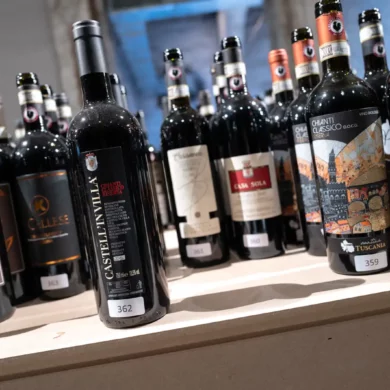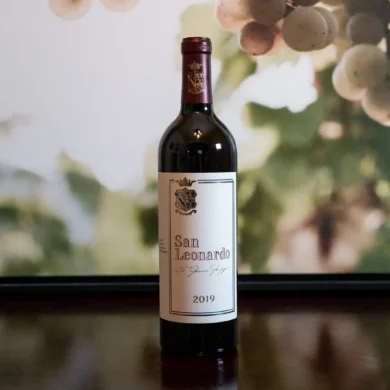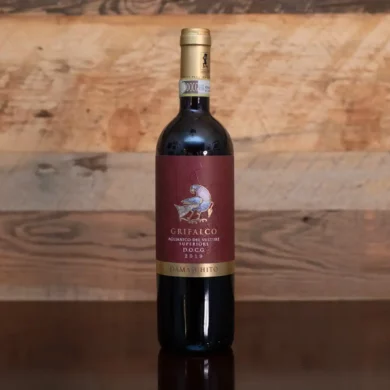I’ve had Tenuta San Guido’s Sassacaia and Gaja’s Barbaresco and shrugged. I’ve tasted Biondi-Santi’s Brunello and Bartolo Mascarello Barolo and swooned. I don’t bring this up to brag or show some superior sense of tasting acumen, but rather to remind everyone that when it comes to Italy’s most coveted — and therefore, expensive — red wines, the cookie can crumble lots of ways. Moreover, it is a good reminder that a snap judgment on one bottle taste at one moment in time is often just that: a snapshot. But if these wines leave us wanting, it is often because the expectations are so extreme.
With Quintarelli’s Valpolicella Classico Superiore, I could sense we were going somewhere, but that I hadn’t left enough wine in the bottle to ultimately find out where.
So I found myself in such a conundrum when tasting Giuseppe Quintarelli’s 2017 Valpolicella Classico Superiore a few weeks ago. Lauded for its extremely patient and traditional approach, as well as the meticulous care of its hillside vineyards, Quintarelli is far and away Veneto’s most praised and coveted winery. The man himself, who died in 2012, was known for doing things his own way and not seeking the spotlight. But certainly, the spotlight found him. In the 1980s and 1990s, his Amarone della Valpolicella was praised by several critics, many of whom weren’t known to be fans of traditionally styled wines, but who understood his point of view and who praised his ability to coax complexity out of the Amarone process.
“One does not question the maestro,” wrote Italian wine critic Daniele Cernilli, better known as Doctor Wine, when he review the 2000 Valpolicella Classico Superiore in 2012. “One loves him.”
First Impression
As an Italian wine obsessive, I’ve long been curious about whether the wines lived up to the hype.
But as an ardent lover of traditional wines, I simply wanted to know what was behind the most famous hand-written label in the world of wine. Was it ethereal in weight? Subtle with its power? Multi-layered with its complexity? What is going on in there? I asked … until finally, I had my first glass of Quintarelli a few weeks ago: the entry-level 2017 Valpolicella Classico Superiore. Retail price: around $125.
And … it was remarkably — how best to say this? — simple. At least at first.
Some of this is hardcoded into Valpo. Amarone and Ripasso aside, I have never had a Valpolicella wine that was complex in the first place. Valpo is a refreshing and bitterly fruity wine with lean tannins and finely etched acidity. It is perfectly at home during aperitivo on the raucous streets of Verona, or by a river with take-out pizza. It is not meant to be fawned over. And that was my first impression of this wine: it simply was what it was, and beautiful at that. “The tannins are satin smooth, and the alcohol is big. Really feel it,” I wrote in my notes. “Nice bitter black currant flavors, some dimension of smoke and pink flowers.”
Sounds like a good wine, right? It is. But is it a $125 wine? Sometimes you have to be willing to sink some added cost into experiencing one of the greats of Italy, even at the entry level (see note below, this was a sample sent to me, but I still have to evaluate cost).
To cite two earlier examples, the comparison here would be to Biondi-Santi’s Rosso di Montalcino (usually a little over $100) and Bartolo Mascarello’s Langhe Nebbiolo (also around $100). One doesn’t drink these wines and claim “I get it now.” You have to taste the top wine, and a few vintages to boot, to claim that.
Yet, was this wine on a par with similarly priced entry-level wines from grand estates? Did it offer enough of a tease to up the ante for a bigger bottle? I wasn’t convinced at first. In fact, the question is largely moot because Amarone is such a fundamentally different process for making a wine, as it coaxes a type of complexity and nuance from Corvina and its cohorts that fundamentally tastes different because of the drying process. In other words, Valpolicella is not to Amarone, what Nebbiolo Langhe is to Barolo.
But the Wine Kept Speaking
We didn’t finish the wine that first night, and that’s a good thing. We went away for the weekend, returned, and I revisited what was left some four nights after recorking it. The tenor of my raw notes was quite different: “Significantly better. Wow. It’s rounder, less angular, more spicy, and very refined. Charmingly smoky, and savory too. Impressive.”
We often want clean and tidy assessments in these wine reviews, but some wines simply don’t allow it. They prompt you to second-guess yourself, to miss the narrative, to make proclamations you’d later regret (that is, if you don’t move on to the next wine and actually give this one its due). Quintarelli’s Valpolicella Classico Superiore was one such wine.
I’ve always struggled with this facet of wine criticism, because unlike film or literary criticism, the very thing we’re evaluating varies from bottle to bottle, night to night, glass to glass. It is a living thing. A moving target.
With Quintarelli’s Valpolicella Classico Superiore, I could sense we were going somewhere, but that I hadn’t left enough wine in the bottle to ultimately find out where. More than seven years of aging, apparently, wasn’t enough. And maybe that’s the point: to get Quintarelli, you really can’t drink it too soon.
The estate commands respect, and I’m still intrigued to learn more. At what cost, however? The answer is a moving target for each of us as well.
2017 Giuseppe Quintarelli Valpolicella Classico Superiore
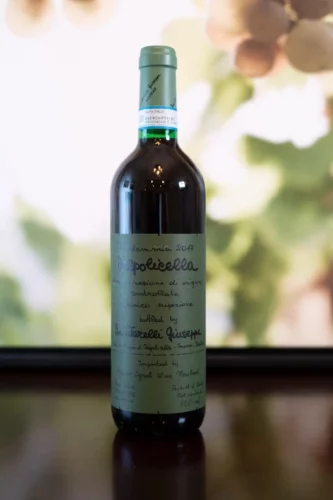 Valpolicella DOC (Veneto )
Valpolicella DOC (Veneto )
Grapes: Corvina (30%), Rondinella (30%), Corvinone (25%), Cabernet Sauvignon (6%), Nebbiolo (4%), Croatina (3%), Sangiovese (2%)
Alcohol: 15%
Opinion: ★★★★ 3/4
Food friendliness: Selective
Value: Costly
A beginner might like … appreciating Valpolicella for what Valpolicella is. This really is best in class for this category of wine: refined, quenching, with moody flavors leaning toward a darker spectrum of fruit and smokiness. I would advise beginners against putting this wine on a pedestal before drinking it, as is the temptation with any benchmark producer of scarcity. The rewards lie not in valorizing the label, but in tasting the simpler Valpolicella style as it hits its marks.
A wine obsessive might like … defying the maxims of Valpolicella and not “popping and pouring.” Give this wine ample time and space to maneuver. As noted above, I honestly didn’t get it on the first night. Air, time, and patience allowed it to emerge and start speaking, which I would highly recommend here.
Note: This wine was provided as a sample by Kermit Lynch Wine Merchant upon my request. I appreciate their generosity, as this is not a wine in abundant supply. Learn more about our editorial policy.

